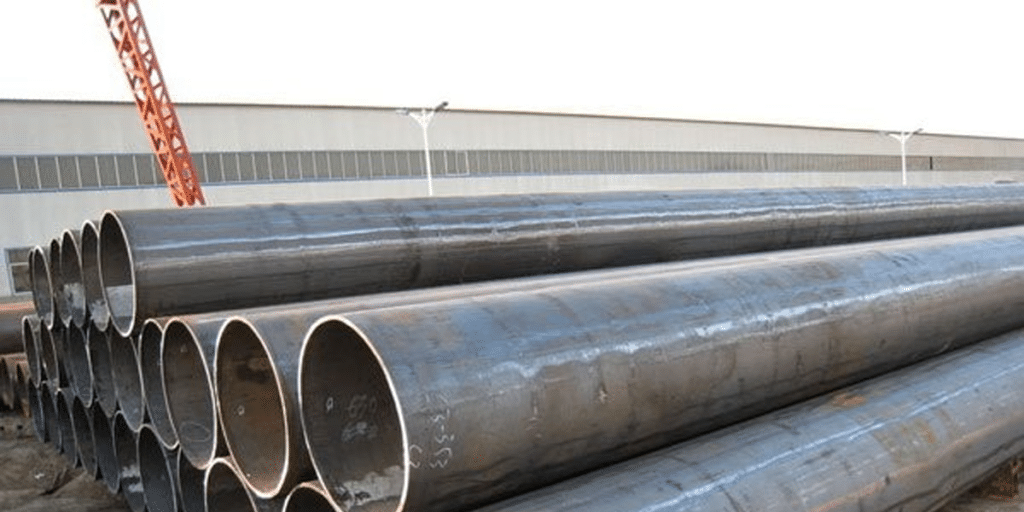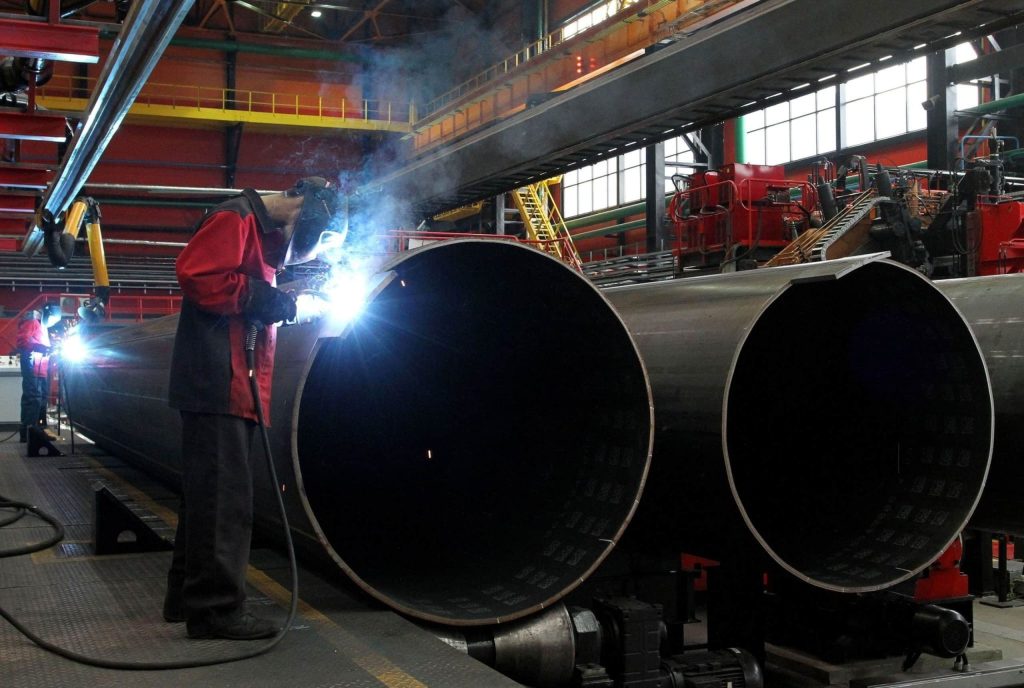- 1. Overview of the ASTM A53 Standard
- 2. Manufacturing Differences Between Type E and Type S
- 3. ASTM A53 Type E vs Type S: Key Performance Comparison
- 4. Features and Applications of ASTM A53 Type E Grade B
- 5. Why Type S (Seamless) Is Preferred for High-Demand Applications
- 6. Relationship Between ASTM A53, ASTM A106, and API 5L
- 7. LONGMA’s Quality Assurance and Testing Capabilities
- 8. Conclusion
In the field of carbon steel pipe manufacturing, ASTM A53 Grade B is one of the most commonly used standards. It is widely applied in oil and gas transportation, water pipelines, and structural engineering.
However, many buyers notice that the ASTM A53 specification includes two main manufacturing types — Type E and Type S — but are not always clear about how they differ.
This article provides an in-depth comparison of ASTM A53 Type E (ERW) and Type S (Seamless) pipes, explaining their manufacturing processes, mechanical characteristics, advantages, and typical applications, to help you make an informed purchasing decision.
Overview of the ASTM A53 Standard
ASTM A53 / A53M, developed by ASTM International, is titled “Standard Specification for Pipe, Steel, Black and Hot-Dipped, Zinc-Coated, Welded and Seamless.”
It covers carbon steel pipes used for conveying steam, water, air, natural gas, and other fluids, as well as for mechanical and pressure applications.The standard classifies pipes into three manufacturing types:
- Type F (Furnace-butt welded):Furnace welded pipe (rarely used today)
- Type E (Electric Resistance Welded, ERW):Longitudinally welded by electrical resistance
- Type S (Seamless):Hot-finished seamless pipe
Among these, Type E and Type S are the two most common in today’s market. Let’s examine their differences in detail.
Manufacturing Differences Between Type E and Type S
(1) ASTM A53 Type E (ERW Pipe)
Type E pipes are produced using Electric Resistance Welding (ERW) technology.
Production process:
- Hot-rolled steel coils are formed into a cylindrical shape.
- The edges are heated by high-frequency electrical currentto a plastic state.
- Pressure is applied to fuse the edges and form a solid weld seam.
- The pipe is then cooled, straightened, cut to length, and hydrotested.
This process uses no filler metal, resulting in a tight, uniform weld seam with high dimensional accuracy and excellent productivity.
Testing requirements:
According to ASTM A53/A53M Section 6.2, Type E pipes must undergo non-destructive testing (NDT) — typically electromagnetic or ultrasonic inspection — to verify weld integrity.
(2) ASTM A53 Type S (Seamless Pipe)
Type S pipes are manufactured through a hot-rolled piercing process, without any weld seam.
Production process:
- Solid round billets are heated and pierced to create a hollow shell.
- The shell is rolled over a mandrel to achieve desired wall thickness.
- Pipes are elongated, sized, and cooled to final dimensions.
Because Type S pipes have no weld seam, they offer superior pressure resistance, better corrosion performance, and enhanced reliability.They are widely used in high-pressure steam pipelines, oil and gas transmission lines, and high-stress structural applications.
ASTM A53 Type E vs Type S: Key Performance Comparison
| Category | ASTM A53 Type E (ERW) | ASTM A53 Type S (Seamless) |
| Manufacturing Process | Electric Resistance Welding (ERW) | Hot-Rolled Piercing (Seamless) |
| Weld Seam | Present | None |
| Dimensional Accuracy | Very High | High |
| Mechanical Properties | Excellent, slightly lower than seamless | Superior, especially under pressure |
| Testing Requirements | Mandatory NDT (ASTM A53 §9.3) | Hydrostatic or NDT optional |
| Cost | Lower | Higher |
| Typical Applications | Low-pressure water lines, building structures | High-pressure steam and oil & gas pipelines |
| Typical Grade | ASTM A53 Type E Grade B | ASTM A53 Type S Grade B |
Features and Applications of ASTM A53 Type E Grade B
ASTM A53 Type E Grade B (ERW) is one of the most commonly used specifications in the global market.
Typical chemical composition (%):
| Element | C | Mn | P | S | Cu + Ni + Cr + Mo + V |
| Max | 0.30 | 1.20 | 0.05 | 0.045 | 1.00 |
Mechanical requirements (per ASTM A53/A53M §9.2):
- Tensile Strength:≥ 415 MPa
- Yield Strength:≥ 240 MPa
- Elongation:≥ 20%
Thanks to its balance between strength, weldability, and cost, Type E Grade B is widely applied in:
- Water and natural gas pipelines
- Fire protection and building water systems
- Industrial structural supports
- Low- and medium-pressure process lines
Why Type S (Seamless) Is Preferred for High-Demand Applications
In critical environments requiring high strength and zero leakage, ASTM A53 Type S Grade B offers distinct advantages:
- No weld seam — eliminating potential weld-related defects
- Higher resistance to pressure and temperature
- Superior fatigue performance for long-term operation
- Compatible with API 5Land ASTM A106 Grade B standards
Therefore, Type S pipes are often chosen for high-pressure boilers, oil & gas field pipelines, and offshore platforms.
Relationship Between ASTM A53, ASTM A106, and API 5L
Buyers often confuse ASTM A53 Grade B, ASTM A106 Grade B, and API 5L Grade B.Here’s the simple distinction:
- ASTM A53:General-purpose and low-pressure transport applications.
- ASTM A106:Designed for high-temperature and high-pressure
- API 5L:Intended for oil and gas pipeline
Notably, ASTM A53 Type S Grade B and ASTM A106 Grade B have very similar mechanical and chemical properties, making them interchangeable in some projects, provided that testing and documentation meet the specified standard.
LONGMA’s Quality Assurance and Testing Capabilities
With over 20 years of experience in steel pipe manufacturing, LONGMA has established a comprehensive internal quality management and inspection system to ensure every product meets international standards.
Our quality highlights:
- Chemical Analysis Lab:Advanced spectrometer for precise composition testing
- Mechanical Testing Center:Verifies tensile strength, yield strength, and elongation
- NDT (Non-Destructive Testing):Ultrasonic and electromagnetic inspection for all ERW welds
- Hydrostatic Testing:100% weld seam tightness verification for Type E pipes
- Traceable MTC System:Mill Test Certificates for full batch traceability
LONGMA supplies both ASTM A53 Type E and Type S Grade B carbon steel pipes in compliance with ASTM A53/A53M, EN 10217, and DIN 2448, and can provide ASTM A53 Grade B specification PDFs and third-party inspection reports upon request.
Conclusion
Understanding the distinction between ASTM A53 Type E (ERW) and Type S (Seamless) is crucial for selecting the right pipe for your project.
- If your project prioritizes cost-effectiveness and general performance, choose ASTM A53 Type E Grade B.
- If it demands higher pressure, temperature, or corrosion resistance, ASTM A53 Type S Grade Bis the better choice.
No matter which you need, LONGMA provides reliable, fully tested, and certified steel pipe solutions.
Contact our technical team today for a customized ASTM A53 Grade B specification PDF and quotation — ensuring your project runs safer, stronger, and more efficiently.



